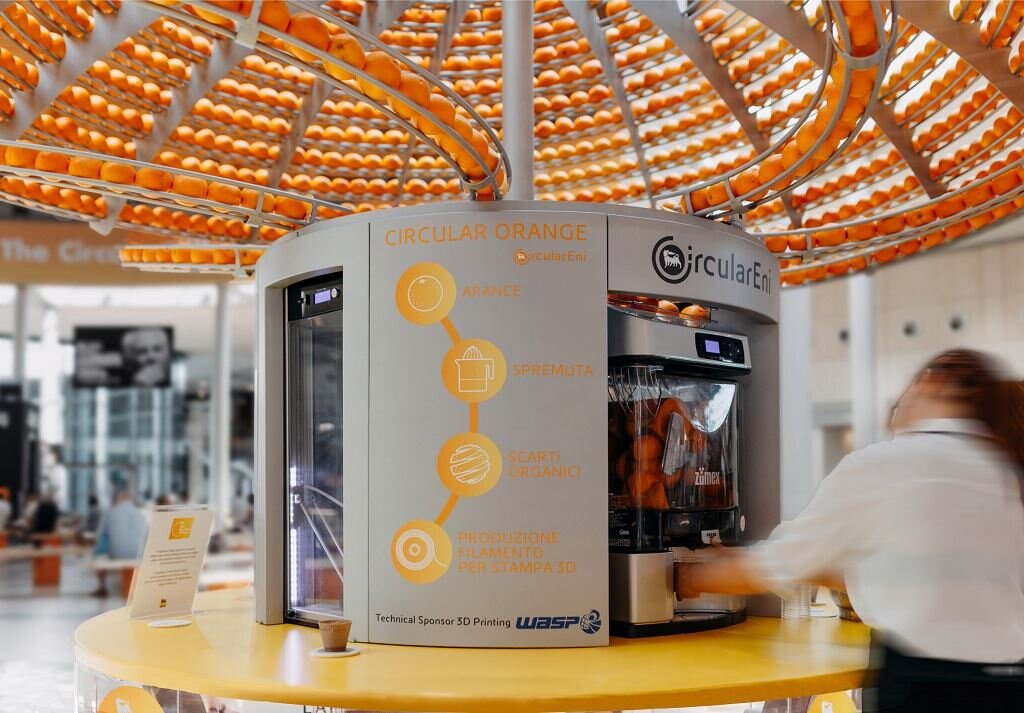![Feel the Peel juice bar [Image: Dezeen ]](https://fabbaloo.com/wp-content/uploads/2020/05/dezeen1a_img_5eb0906869a1e.jpg) Feel the Peel juice bar [Image: Dezeen ]
Feel the Peel juice bar [Image: Dezeen ]
One of the phrases we’re hearing a lot right now is “circular economy” — and it turns out 3D printing with orange peel-based plastic is a good illustration of what that means.
There sure are a lot of buzzwords in business in 2019. We talk a lot about some of the common ones in 3D printing (“game-changing”, “innovative”, “disruptive”, and “world’s first” come to mind as being especially overused), but “3D printing” itself is often buzzy within broader scopes. Sometimes buzz meets buzz, though, to create something larger (buzzier?) than the sum of its parts.
The latest hive of buzz comes from Carlo Ratti Associati out of Italy, which recently introduced a conceptual juice bar.
Feel the Peel
![Feel the Peel juice bar [Image: Dezeen]](https://fabbaloo.com/wp-content/uploads/2020/05/dezeen2a_img_5eb09068c74a3.jpg)
So far as juice bars go, it’s very snazzy. Eye catching, with 1,500 spherical fruits circling from above, each dropping to the juicer upon order.
It’s what happens after the juicing that makes this installation interesting. It’s called “Feel the Peel” and stands as both prototype and statement piece. Dezeen explains:
“After being juiced, the leftover orange peel falls into a see-through compartment at the bottom of the machine. The collected rinds are then dried and milled to make ‘orange dust’, which is mixed with polylactic acid (PLA) to form a bioplastic material.
This material is then heated and melted to form a filament, which is fed through a 3D printer incorporated into the machine.”
Photos of Feel the Peel show that the technical sponsor for the project is Wasp, which has plenty of experience working with unique materials in its 3D printers. The bioplastic created from the orange-infused PLA is 3D printed into a cup — ready to be filled with orange juice.
That used cup shouldn’t be discarded, though, as it too can be broken back down, turned again and again into a new cup.
Along with Wasp, Carlo Ratti worked with Eni to bring the project to life — and it’s a life that’s set to keep going. Updates to Feel the Peel may expand the 3D printing, apparently even making fabric. There’s “you are what you eat” and then there’s “you wear what you drink” which, with this approach, isn’t so messy as it sounds; why not strut about in orange peel fashion?
“The principle of circularity is a must for today’s objects,” said founder Carlo Ratti. “Working with Eni, we tried to show circularity in a very tangible way, by developing a machine that helps us to understand how oranges can be used well beyond their juice.”
Via Dezeen

